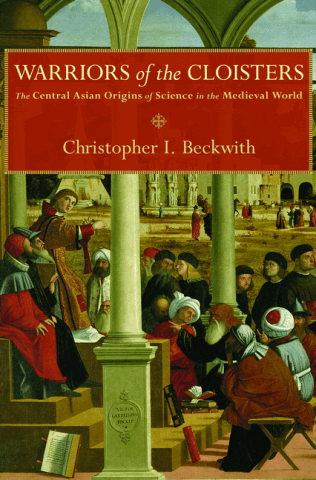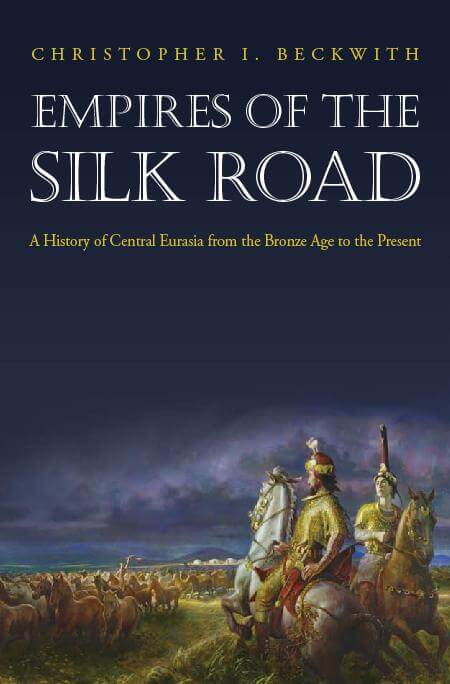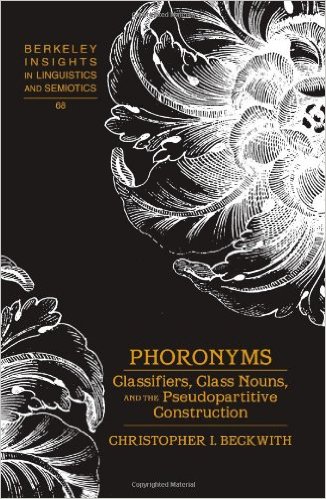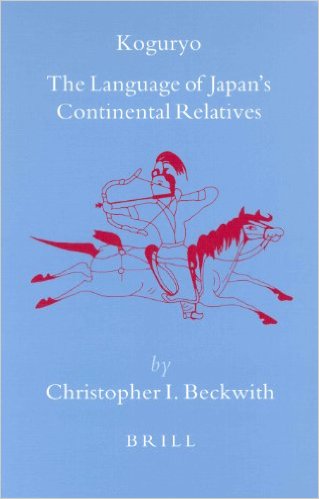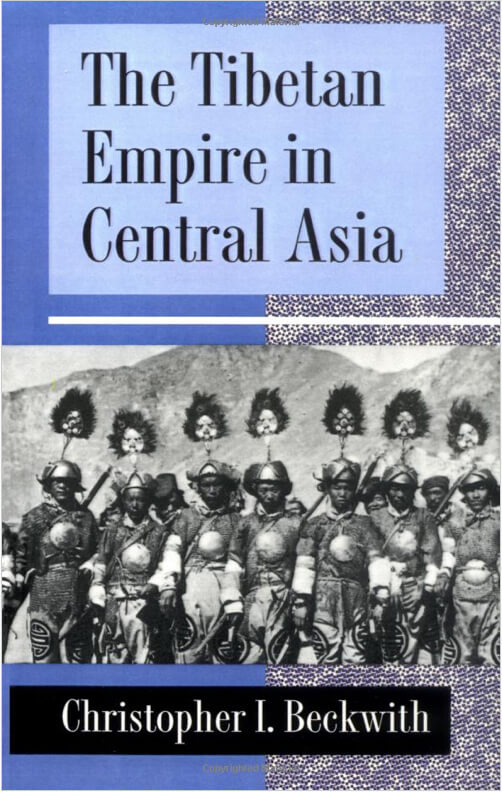
Adjunct Affiliations
Distinguished Professor, Linguistics
Education
Ph.D. in Inner Asian Studies, Indiana University, Department of Uralic and Altaic Studies, 1977
M.A. in Tibetan, Indiana University, Department of Uralic and Altaic Studies, 1974
B.A. in Chinese, Ohio State University, 1968
Research Interests
History and linguistics of ancient and medieval Central Eurasia and East Asia. Scythian, Old Turkic, Koguryo, Old Tibetan, Aramaic, and other languages. Linguistics of Chinese from Old Chinese to Mandarin, including morphophonology, ‘classifiers’, and syntax. The Scythians and the Classical Age. Modernism and Democracy.
Courses Recently Taught
- Buddhism in Central Asia
- Aramaic
- Empires of the Silk Road: History of Central Eurasia
- Old Tibetan
Publication Highlights
The Scythian Empire: Central Eurasia and the Birth of the Classical Age from Persia to China. Princeton: Princeton University Press, 2023.
Greek Buddha: Pyrrho's Encounter with Early Buddhism in Central Asia. Princeton: Princeton University Press, 2015.
Warriors of the Cloisters: The Central Asian Origins of Science in the Medieval World. Princeton: Princeton University Press, 2012.
Empires of the Silk Road: A History of Central Eurasia from the Bronze Age to the Present. Princeton: Princeton University Press, 2009. Revised paperback edition, Princeton: Princeton University Press, 2011.
İpek Yolu İmparatorlukları: Bronz Çağı’ndan Günümüze Orta Asya Tarihi. Turkish translation of Empires of the Silk Road. Ankara: Odtü Yayıncılık, 2011.
Chungangyurasia segyesa. Seoul: Sowadang, 2014. Korean translation of Empires of the Silk Road.
Yūrashia teikoku no kōbō: Seikaishi 4000-nen no shingenchi. Trans. Yoshio Saito. Tokyo: Chikuma Shobo, 2017. Japanese translation of Empires of the Silk Road.
Imperia jedwabnego szlaku: Historia centralnej Eurazji od epoki brązu do czasów obecnych. Warsaw: Państwowy Instityt Wydawniczy, 2020. Polish translation of Empires of the Silk Road.
Sīzhōu-zhī lùshàng-de dìguó. Beijing: Zhongxin Chuban Jituan 2020. Chinese translation of Empires of the Silk Road.
Medieval Tibeto-Burman Languages III.Halle: IITBS GmbH, 2008.
Phoronyms: Classifiers, Class Nouns, and the Pseudopartitive
Construction. New York: Peter Lang Publishing, 2007.
Koguryo, the Language of Japan’s Continental Relatives: An Introduction to the Historical-Comparative Study of the Japanese-Koguryoic Languages, with a
Preliminary Description of Archaic Northeastern Middle Chinese. Second Edition. Leiden: Brill, 2007 (First edition, 2004).
Koguryŏ: Ilbon-ŭl taeryuk-kwa yŏngyŏlsik’yŏ junŭn ŏn’ŏ. Korean translation of the
preceding book. Seoul: Koguryŏ yŏn’gu jaedan, 2006.
Medieval Tibeto-Burman Languages II. Leiden: Brill, 2006.
Medieval Tibeto-Burman Languages. Leiden: Brill, 2002.
The Tibetan Empire in Central Asia: A History of the Struggle for Great Power among Tibetans, Turks, Arabs, and Chinese during the Early Middle Ages. Princeton: Princeton University Press, 1987; paperback edition, with a new afterword, 1993.
Tufan zai zhongya: zhonggu zaoqi tufan, dashi, tangchao zhengduo shi. Urumchi: Xinjiang renmin chubanshe, 2012. Chinese translation of The Tibetan Empire in Central Asia.
Selected Articles
Vihāras in the Kushan Empire. In: Payne, Richard E. and Rhyne King, eds. 2020. The Limits of Empire in Ancient Afghanistan: Rule and Resistance in the Hindu Kush, circa 600 bce - 600 ce. Classica et Orientalia 24. Wiesbaden: Harrassowitz Verlag, 157-167.
On the Ethnolinguistic Identity of the Hsiung-nu,’ in Zs. Gulacsi (ed.), Language, Government, and Religion in the World of the Turks: Festschrift for Larry Clark at Seventy-Five (Silk Road Studies 19). Turnhout: Brepols (2018) pp. 33-55.
(With Gisaburo N. Kiyose†) Apocope of Late Old Chinese Short *ă: Early Central Asian Loanword and Old Japanese Evidence for Old Chinese Disyllabic Morphemes. AOH 71.2 (2018): 145-160.
Early Buddhism and Incommensurability. Philosophy East and West 68:3 (2018) pp. 1009-1016.
Once again on the Aramaic word for ‘monastery’ in East Asia. Journal Asiatique, 305.2 (2017): 211-224.
The earliest Chinese words for ‘the Chinese’: the phonology, meaning, and origin of the epithet Ḥarya ~ Ārya in East Asia. Journal Asiatique, 2016, 304.2: 231-248
The pronunciation, origin, and meaning of A-shih-na in early Old Turkic. In: István Zimonyi and Osman Karatay, eds., Central Eurasia in the Middle Ages. Studies in Honour of Peter B. Golden., Turcologica 104. Wiesbaden: Harrassowitz, 2016, pp. 39-46.
The Aramaic source of the East Asian word for ‘Buddhist monastery’: on the spread of Central Asian monasticism in the Kushan Period. Journal Asiatique 302.1 (2014) 109-136.
On the Ethnolinguistic Position of Manchu and the Manchus within Central Eurasia and East Asia. Manzokushi kenkyū 10 (2011) pp. 17-30.
On Zhangzhung and Bon. In: Henk Blezer, ed., Emerging Bon. Halle: IITBS GmbH, 2012, pp. 164-184.
Pyrrho’s Logic: A Reexamination of Aristocles’ Record of Timon’s Account.
Elenchos 32.2 (2011), pp. 287-327.
A Note on the Heavenly Kings of Ancient Central Eurasia. Archivum Eurasiae Medii Aevi 17 (2010), pp. 7-10.
Old Chinese Loanwords in Korean. In: Sang-Oak Lee, ed., Contemporary Korean Linguistics: International Perspectives. Seoul: Thaehaksa, 2010, pp. 1-22.
The Sarvāstivādin Buddhist Scholastic Method in Medieval Islam and Tibet. In: Anna Akasoy, Charles Burnett, and Ronit Yoeli-Tlalim, eds., Islam and Tibet: Interactions along the Musk Routes. Aldershot: Ashgate, 2010, pp. 163-175.
The Dating and Interpretation of the Old Tibetan Inscriptions. Central Asiatic Journal, 54.2 (2010) pp. 290-317 (with Michael L. Walter).
On the Meaning of Old Tibetan rje-blon during the Tibetan Empire Period. Journal Asiatique 298.2 (2010), pp. 535-548 (with Michael L. Walter).
Could There Be a Korean–Japanese Linguistic Relationship Theory? Science, the Data, and the Alternatives. A State-of-the-Field Article. International Journal of Asian Studies 7.2 (2010), pp. 201-219.
The Frankish Name of the King of the Turks. Archivum Eurasiae Medii Aevi 15 (2006/7), pp. 5-11.
A Note on the Name and Identity of the Junghars. Mongolian Studies 29 (2007), pp. 41-46.
On the Proto-Indo-European Obstruent System. Historische Sprachforschung 2007, 120: 1-19.
Methodological Observations on Some Recent Studies of the Early Ethnolinguistic History of Korea and Vicinity. Altai Hakpo 2006, 16: 199-234.
Introduction: Toward a Tibeto-Burman Theory. In: C.I. Beckwith, ed., Medieval Tibeto-Burman Languages II. Leiden: Brill, 2006, 1-38.
The Sonority Sequencing Principle and Old Tibetan Syllable Margins. In: C.I. Beckwith, ed., Medieval Tibeto-Burman Languages II. Leiden: Brill, 2006, 45-55.
Old Tibetan and the Dialects and Periodization of Old Chinese. In: C.I. Beckwith, ed., Medieval Tibeto-Burman Languages II. Leiden: Brill, 2006, 179-200.
The Ethnolinguistic History of the Early Korean Peninsula Region: Japanese-Koguryoic and Other Languages in the Koguryo, Paekche, and Silla Kingdoms. Journal of Inner and East Asian Studies, 2005, Vol. 2-2: 34-64.
On the Chinese Names for Tibet, Tabghatch, and the Turks. Archivum Eurasiae Medii Aevi, 2005, 14: 5-20.
The Sino-Tibetan Problem. In: C.I. Beckwith, ed. Medieval Tibeto-Burman Languages. Leiden: Brill, 2002, 113-157.
The Idea of a Classifier System: Theoretical Problems in the Analysis of Japanese Noun Specification. Web Journal of Formal, Computational and Cognitive Linguistics, 1999. (Valery Solovyev, ed., Web Journal of Formal, Computational and Cognitive Linguistics, 1997-1999, CD edition, Kazan, 2000.)
Noun Specification and Classification in Uzbek. Anthropological Linguistics, Vol. 40.1, 1998, 124-140.
The Morphological Argument for the Existence of Sino-Tibetan. Pan-Asiatic Linguistics: Proceedings of the Fourth International Symposium on Languages and Linguistics, January 8-10, 1996, Vol. III. Bangkok, 1996, 812-826.
The Impact of the Horse and Silk Trade on the Economies of T’ang China and the Uighur Empire: On the Importance of International Commerce in the Early Middle Ages. Journal of the Economic and Social History of the Orient, Vol. 34, 1991, 183-198.
The Tibetans in the Ordos and North China: Considerations on the Role of the Tibetan Empire in World History. In: C.I. Beckwith, ed., Silver on Lapis. Bloomington, 1987, 3-11.
Aspects of the Early History of the Central Asian Guard Corps in Islam. Archivum Eurasiae Medii Aevi, Vol. 4, l984, 29-43.
The Plan of the City of Peace: Central Asian Iranian Factors in Early ‘Abbâsid Design. Acta Orientalia Academiae Scientiarum Hungaricae, Vol. 38, l984, 128-147.
Current research projects
- Biblical Imperial Aramaic
- (with Andrew E. Shimunek) Attested Middle Chinese
- Democracy Belief and World Crisis
Selected Awards and Honors
- A “New Yorker Best Book We've Read This Year”, for The Scythian Empire, 2023.
- Academy of Korean Studies, World Distinguished Scholar series lecturer; Seoul, November 25-30, 2013.
- 2009 first-prize PROSE Award of the Association of American Publishers (AAP) for best book in the category ‘World History & Biography/Autobiography’ for Empires of the Silk Road (Princeton University Press).
- Fulbright-University of Vienna Distinguished Chair in Humanities and Cultural Studies, 2009.
- Numata Distinguished Guest Speaker Series Lecturer, Oxford University, 2008.
- Guggenheim Foundation Fellowship (2004), 2005-2006.
- Japan Foundation Fellowship (2001), 2001-2002.
- MacArthur Fellowship, The MacArthur Foundation (1986), 1986-1991.


